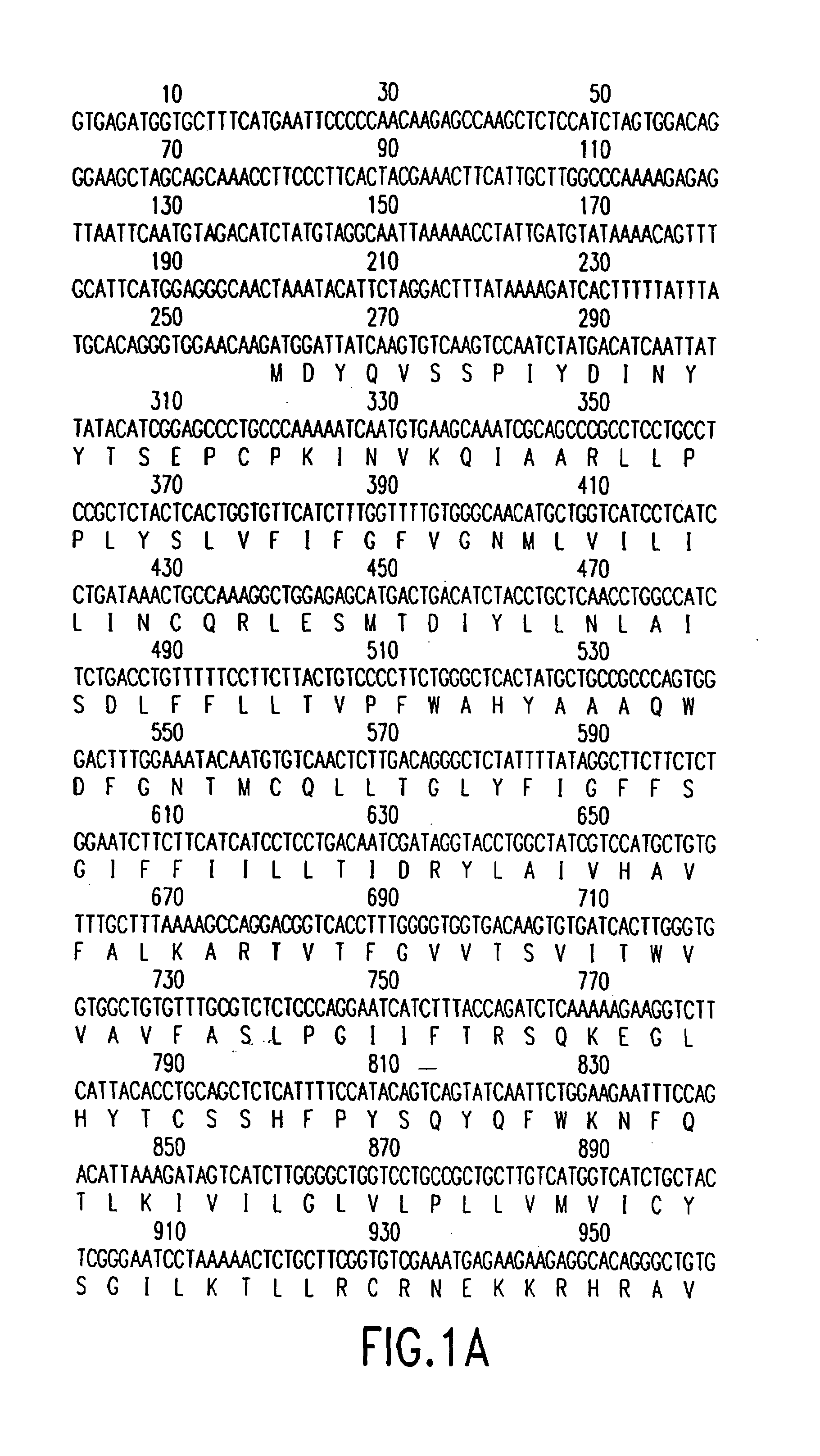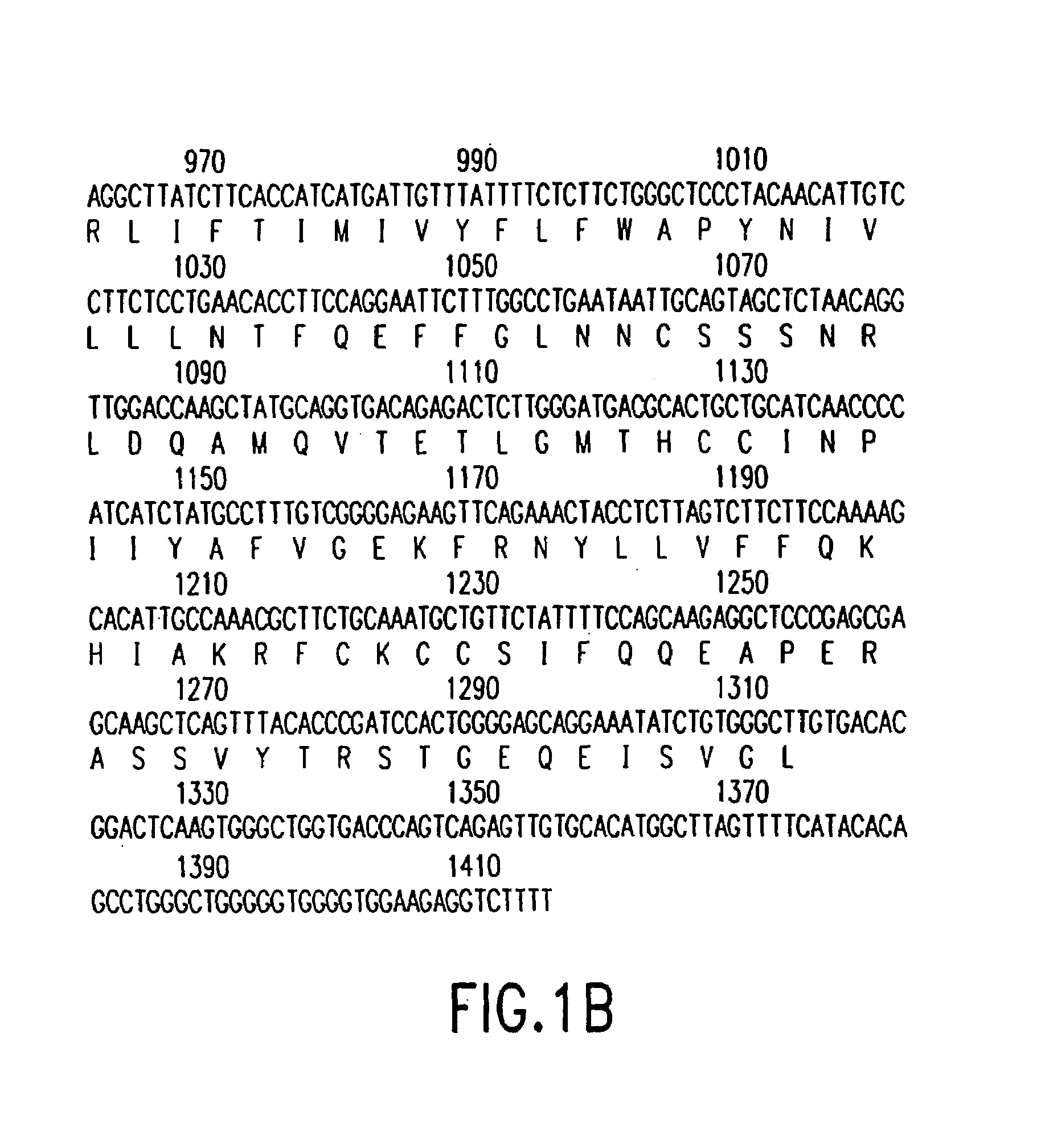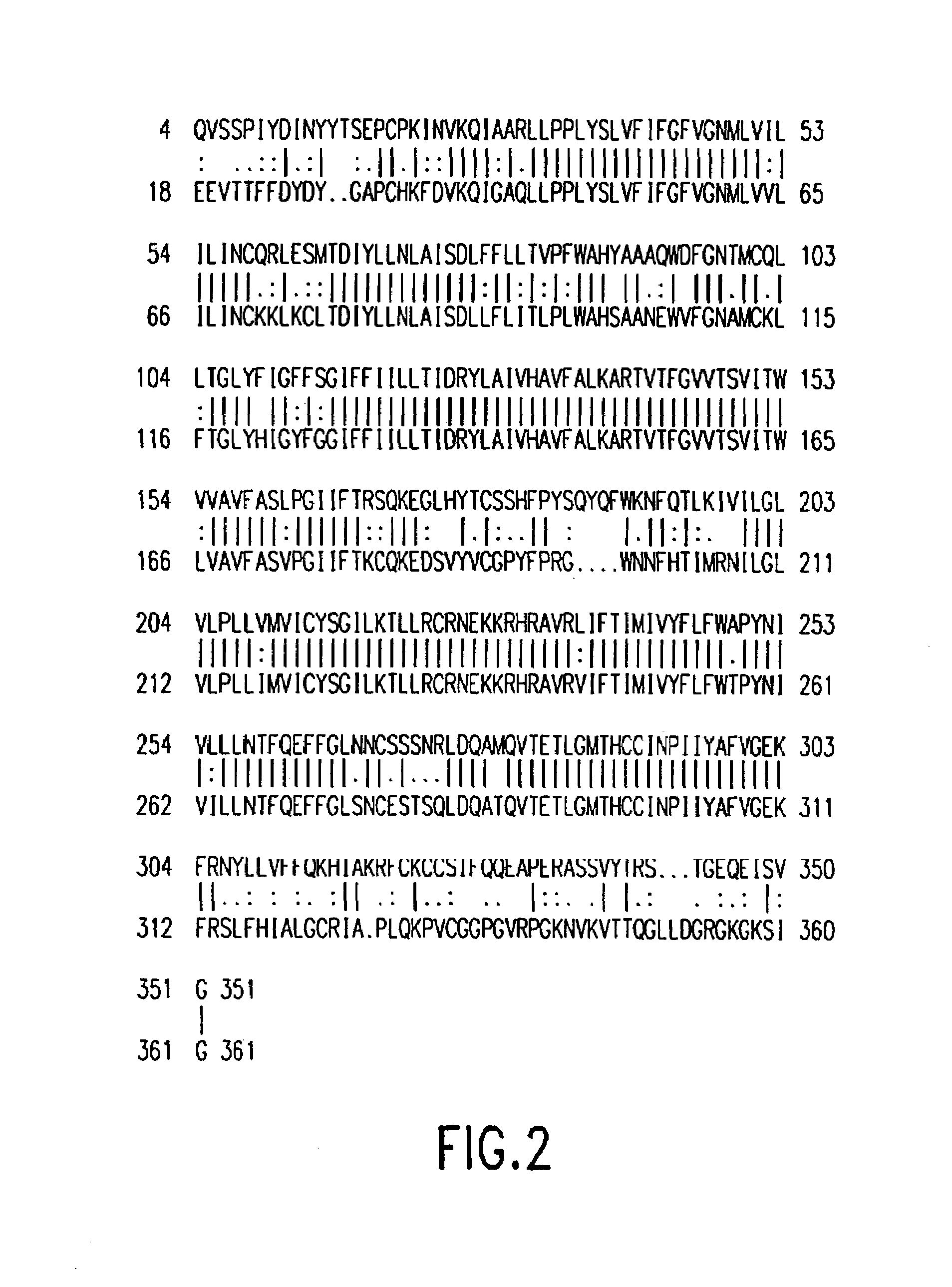Human G-protein chemokine receptor (CCR5) HDGNR10
a human gene and chemokine receptor technology, applied in the field of new human gene encoding a polypeptide, can solve the problems of drug resistance to hiv in the body, difficulty in complying with complex dosing regimens, and failure to successfully achieve half of patents, etc., to stimulate growth factor activity and stimulate haematopoiesis
- Summary
- Abstract
- Description
- Claims
- Application Information
AI Technical Summary
Benefits of technology
Problems solved by technology
Method used
Image
Examples
example 1
Bacterial Expression and Purification of HDGNR10
[0879]The DNA sequence encoding for HDGNR10, ATCC No. 97183 is initially amplified using PCR oligonucleotide primers corresponding to the 5′ and sequences of the processed HDGNR10 protein (minus the signal peptide sequence) and the vector sequences 3′ to the HDGNR10 gene. Additional nucleotides corresponding to HDGNR10 were added to the 5′ and 3′ sequences respectively. The 5′ oligonucleotide primer has the sequence 5′ CGGAATTCCTCCATGGATTATCAAGTGTCA 3′ (SEQ ID NO:3) and contains an EcoRI restriction enzyme site followed by 18 nucleotides of HDGNR10 coding sequence starting from the presumed terminal amino acid of the processed protein codon.
[0880]The 3′ sequence 5′CGGAAGCTTCGTCACAAGCCCACAGATAT 3′ (SEQ ID NO:4) contains complementary sequences to a HindIII site and is followed by 18 nucleotides of HDGNR10 coding sequence. The restriction enzyme sites correspond to the restriction enzyme sites on the bacterial expression vector pQE-9 (Qi...
example 2
Expression of Recombinant HDGNR10 in COS Cells
[0882]The expression of plasmid HDGNR10 HA is derived from a vector pcDNAI / Amp (Invitrogen) containing: 1) SV40 origin of replication, 2) ampicillin resistance gene, 3) E. coli replication origin, 4) CMV promoter followed by a polylinker region, a SV40 intron and polyadenylation site. A DNA fragment encoding the entire HDGNR10 precursor and a HA tag fused in frame to its 3′ end was cloned into the polylinker region of the vector, therefore, the recombinant protein expression is directed under the CMV promoter. The HA tag correspond to an epitope derived from the influenza hemagglutinin protein as previously described (I. Wilson, et al., Cell 37:767 (1984)). The infusion of HA tag to the target protein allows easy detection of the recombinant protein with an antibody that recognizes the HA epitope.
[0883]The plasmid construction strategy is described as follows:
[0884]The DNA sequence encoding for HDGNR10, ATCC No. 97183, was constructed by...
example 3
Cloning and Expression of HDGNR10 Using the Baculovirus Expression System
[0885]The DNA sequence encoding the full length HDGNR10 protein, ATCC No. 97183, was amplified using PCR oligonucleotide primers corresponding to the 5′ and 3′ sequences of the gene:
[0886]The 5′ primer has the sequence
[0887]5′CGGGATCCCTCCATGGATTATCAAGTGTCA 3′ (SEQ ID NO:7) and contains a BamHI restriction enzyme site followed by 4 nucleotides resembling an efficient signal for the initiation of translation in eukaryotic cells (Kozak, M., J. Mol. Biol. 196:947-950 (1987)) and just behind the first 18 nucleotides of the HDGNR10 gene (the initiation codon for translation is “ATG”).
[0888]The 3′ primer has the sequence
[0889]5′CGGGATCCCGCTCACAAGCCCACAGATAT 3′ (SEQ ID NO:8) and contains the cleavage site for the restriction endonuclease BamHI and 18 nucleotides complementary to the 3′ non-translated sequence of the HDGNR10 gene. The amplified sequences were isolated from a 1% agarose gel using a commercially available...
PUM
| Property | Measurement | Unit |
|---|---|---|
| dissociation constant | aaaaa | aaaaa |
Abstract
Description
Claims
Application Information
 Login to View More
Login to View More - R&D
- Intellectual Property
- Life Sciences
- Materials
- Tech Scout
- Unparalleled Data Quality
- Higher Quality Content
- 60% Fewer Hallucinations
Browse by: Latest US Patents, China's latest patents, Technical Efficacy Thesaurus, Application Domain, Technology Topic, Popular Technical Reports.
© 2025 PatSnap. All rights reserved.Legal|Privacy policy|Modern Slavery Act Transparency Statement|Sitemap|About US| Contact US: help@patsnap.com



